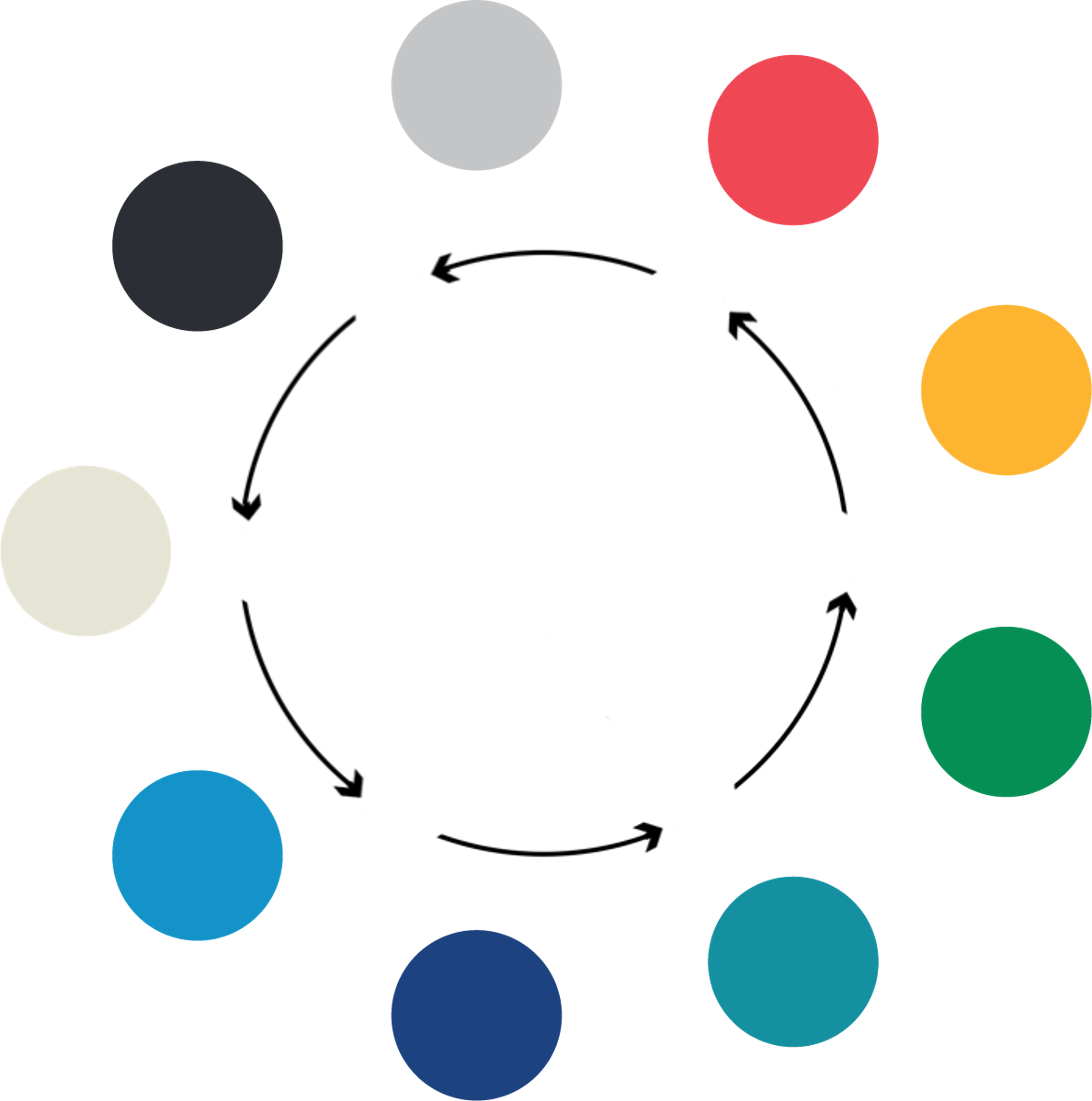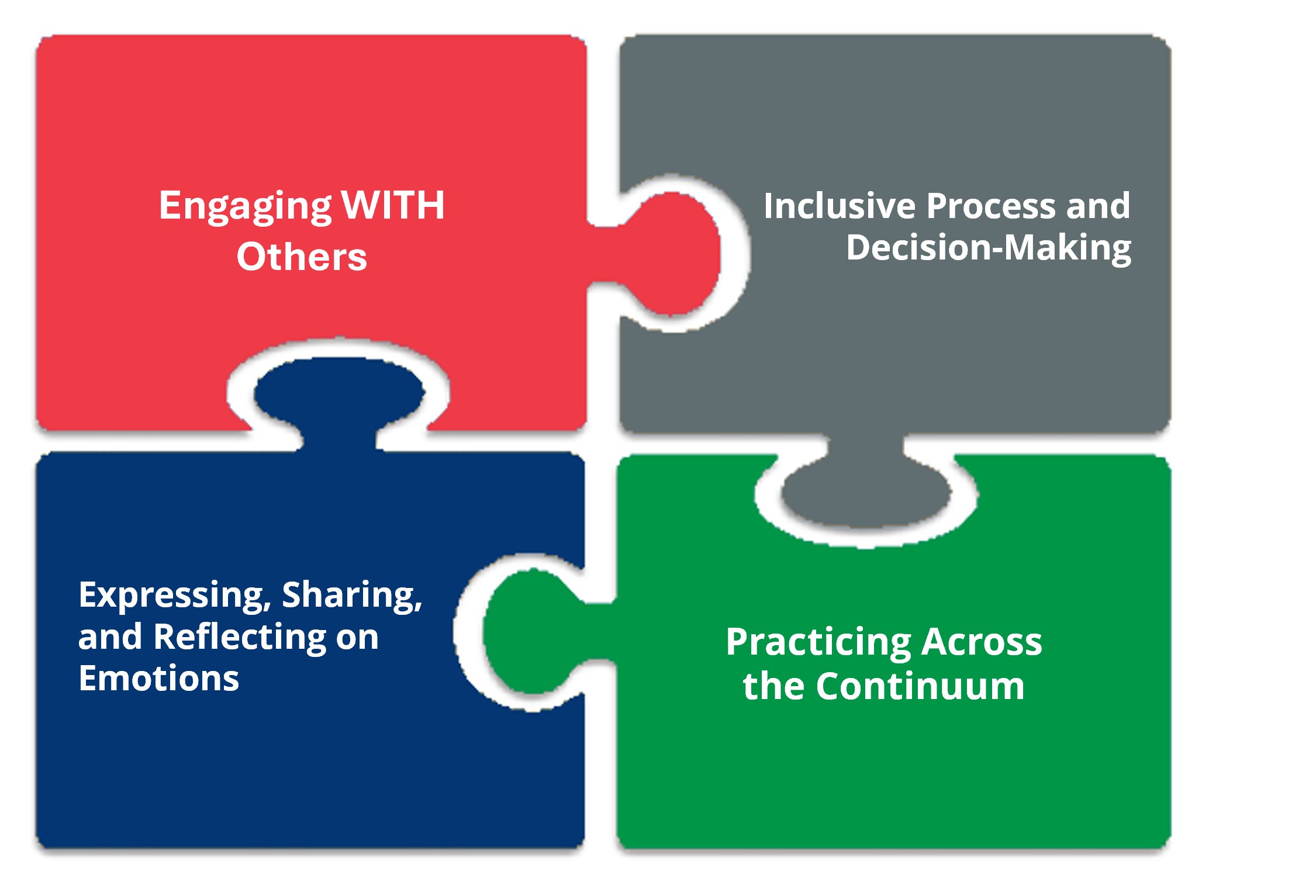What is Restorative Practices?
Restorative practices create spaces for community members to engage in meaningful conversations, address harm, and collaboratively work towards shared understanding. These practices offer an opportunity to focus on healing and accountability rather than punitive outcomes. By implementing restorative practices, we endeavor to foster a supportive environment where every voice is heard, mend relationships, and cultivate and enhance a sense of belonging.
The fundamental hypothesis of restorative practices is that human beings are happier, healthier, more productive, and more likely to make positive changes in their own behavior when we do things WITH them, rather than TO them or FOR them.
Foundations of Restorative Practices
Utilizing Restorative Practices

Restorative practices can:
- Provide an explicit relational framework that guides your practice.
- Offer common language that you can share with faculty, staff, and students.
- Help you lead by design not by default – to be consistent and purposeful in your practices.
Restorative Practices Continuum

Restorative practices (RP) encompasses a continuum of informal to formal processes. Affective statements are a way to communicate feelings and emotions, and affective questions encourage reflection on the impact of one’s behavior on others. Small impromptu conversations may include affective statements and questions but require less preparation than circles and conferences that involve more people, greater planning, and more structure.
While formal restorative processes can have positive immediate impacts on an individual and community, informal practices contribute cumulatively by being integrated into daily interactions.
Adapted from the International Institute for Restorative Practices
Explicit Restorative Practices

A part of the restorative practices conceptual model are four components that lead to strengthened relationships between individuals, strengthened social connections within communities, and an increased sense of personal and collective efficacy, or belief in an individual’s or community’s capabilities to attain their goals and accomplish desired tasks.
The Four Components:- Engaging WITH self and others
- Inclusive decision making
- Expressing, sharing, and reflecting on emotions
- Practicing across the continuum
Adapted from the International Institute for Restorative Practices
Where Restorative Practices Can Be Impactful
- Proactive opportunities for building community and creating spaces where all voices can contribute.
- When you are looking for an opportunity for a constructive conversation to hear diverse opinions on a topic.
- When harm has been done and there is shared interest in working to achieve understanding and acknowledgement.

Community of Practice
The RP Community of Practice at CMU represents a collective of over 80 trained staff members across the University who are working together to support a healthy, productive campus community. Monthly, they gather for relationship building and to engage in ongoing learning and skill-building.
The restorative practices training curriculum used by Carnegie Mellon was developed by International Institute for Restorative Practices (IIRP). Learn more about the IIRP.
Citations
IIRP Graduate School. (n.d.). What is restorative practices? [Video file]. Retrieved from https://www.iirp.edu/restorative-practices/what-is-restorative-practices
Wachtel, T. (2016). Defining restorative. Defining Restorative. https://www.iirp.edu/images/pdf/Defining-Restorative_Nov-2016.pdf